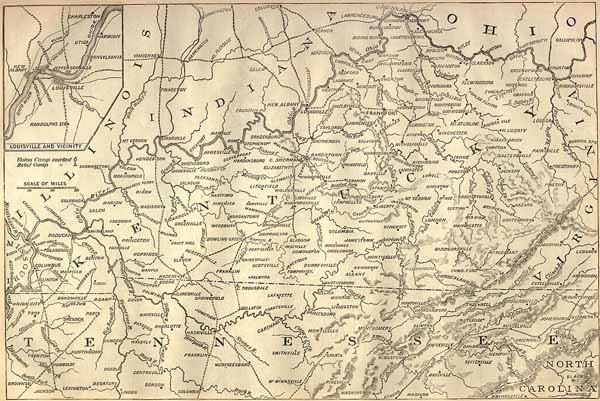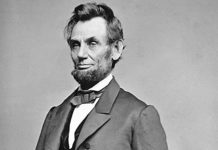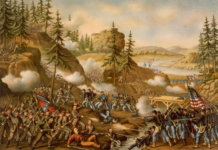A Civil War site in central Kentucky contains lots of African American and Civil War memories.
The title of this article vents a sense that Kentuckians have about the ambivalent position of the state throughout the Civil War! Kentucky was a border state. There was a star in both the Confederate Flag and the Union Flag for the state. It never withdrew from the Union, yet it is regarded by many as a Confederate state. It sent soldiers to both sides in the War. It is the birthplace of both Jefferson Davis and Abraham Lincoln. It suffered through reconstruction along with the rest of the South.
I just returned from a Civil War tour through some of Kentucky’s Civil war battle sites and here’s a report on one of the sites that I saw.
Camp Nelson is the only site of it’s kind in the US not engulfed by urban development. It was an important quartermaster and commissary depot, recruitment center and hospital facility located in Jessamine County. It was the largest encampment outside of Louisville in the state of Kentucky. It was one of the most important places where African American troops were enlisted and trained in the War. Eight regiments of Colored Troops, as African American troops were then designated, were trained at Camp Nelson. A refugee camp for the families of former slaves was also established there.
Construction of Camp Nelson was begun in June, 1863, under orders of General Ambrose Burnside, commander of the newly formed Army of the Ohio. Burnside wanted a secure and large supply depot for his campaign to capture Knoxville, Tennessee. President Lincoln knew that much of East Tennessee was pro-Union and he wanted to wrest it from Confederate control.
The site in Jessamine County, Kentucky, was selected because of its proximity to a turnpike and the fact that it was surrounded on three sides by high palisades above the Kentucky River and was easily defensible. The Camp was named after Major General “Bull” Nelson who founded Camp Dick Robinson, the first Union recruitment camp in Kentucky.
When completed, Camp Nelson contained over 300 buildings numerous tents and nine forts. The core of the camp covered 800 acres on both sides of the Lexington-Danville Pike. The camp had many supervisory officers and over 2,000 civilian employees. The employees included carpenters, blacksmiths, wagon makers, teamsters, harness makers, teamsters, cooks, clerks and laborers, including many impressed slaves.
Camp Nelson usually had 3,000-8,000 soldiers. From its establishment one of Camp Nelson’s missions was to recruit and train soldiers. One of its most significant missions was to recruit and train African American soldiers. Because of its position in one of the Union’s slave holding states, the Union delayed recruitment of slaves, which would free them from slavery. The delay was because of the fear of violent retaliation or even secession of the Commonwealth.
In the Spring of 1864 a flood of African Americans began arriving at Fort Nelson, some of them were free Blacks and some of them slaves. By August, 1864, 2000 Blacks had arrived and by the end of 1865 10,000 had arrived. It was at Camp Nelson that many enlistees got their first taste of freedom although tempered by army life. They performed garrison duty while at Camp Nelson.
As Sergeant Elijah Marrs wrote, “I can stand this said I…this is better than slavery, though I do march in line at the tap of a drum. I felt freedom in my bones and when I saw the American eagle with outspread wings, upon the American flag, with the motto ‘E Pluribus Unum,’ the thought came to me, “Give me liberty or give me death.” Then all fear banished.”
At Camp Nelson, both the newly won freedom and army life offered new experiences and a sense of great optimism for many as Sergeant William Warfield stated:
“This is an age of wonders, and not the least among them is the celebration of the Fourth of July at Camp Nelson, KY., by the colored people. To see thousands who a year ago were slaves, congregate in the heart of a slave State and celebrate the day sacred to the cause of freedom with none to molest or make afraid was a grand spectacle. It was the first time we have ever been permitted to celebrate the Nation’s Day”
While at Camp Nelson, USCT (United States Colored Troops) were involved in battles. They were involved in the battle of Saltville, Virginia. About 45 of its members were murdered after the battle, which was a Confederate victory, was over.
When the former slaves arrived at the Camp they were often accompanied by their wives and children. These family members lived either with the recruits or in hastily built shanties. Initially the army did not know what to do with these family members as there was no clear policy.
Finally, in November, 1864, Brigadier Speed Fry, the commander of Camp Nelson, ordered these refugees out of the camp. Over 400 refugees were forced out of the Camp on a bitterly cold day. The order to remove them was eventually countermanded, but 102 refugees died of exposure and disease because of the expulsion from the camp.
The political uproar which followed this incident led directly to the February, 1865 congressional act which freed the families of the recruits and to the establishment of a home for the refugees. This home eventually contained 97 cottages, over 50 tents, numerous cabins, a school, a barracks, mess halls, a hospital and a laundry. It housed between 1,200 and 3,000 women and children. It was administered jointly by the army and the American Missionary Association.
Soon after, the War ended. In April-May 1865, military officials began preparing to close down Camp Nelson. The US Army continued to enlist African American soldiers in order to free them, until December of 1865. By the summer of 1865 nearly all the soldiers at Camp Nelson were African American.
In June of 1866, the army finally abandoned Camp Nelson, ending the military occupation of the area. Most of the buildings were dismantled or sold for their lumber. In 1866 the cemetery at Camp Nelson was designated a National Cemetery.
The remainder of Camp Nelson, except for its cemetery, was returned to its original agricultural and residential use. The civilian houses used by the army were reoccupied, generally by the original owners and the land returned to pasture and cropland. It remains much the same today.





